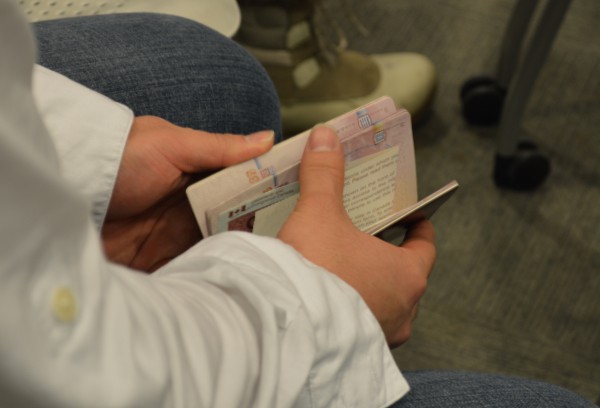New U.S. visa policies now allow mainland Chinese citizens to have a 10-year visitor visa
How annoying it is if you want to visit a place that requires you to apply for a visa every time?
As the nearest country to Canada, the U.S. is always the most visited country by Canadian students. However, for some international students such as the mainland Chinese,visiting the U.S is really not that enjoyable.
Before Nov. 12, mainland Chinese citizens could only get the maximum one-year valid B-2 visa, but sometimes they could only get a three-month single-entry B-2. In practice it was equivalent to a one-off visa.
The fee for a visitor visa application is almost $200, so a trip to the U.S. is quite pricey for Chinese students.
The good news is that this policy has been changed.
According to Shannon Petry, the NIV Consular Officer for the U.S. Consulate General in Toronto who came to George Brown College (GBC) on Feb. 4, “President Obama and the State Department have decided to issue a 10-year visitor visa for the Chinese. That was very nice.”
Under all the requirements and application fee remain unchanged, that no doubt is a nice new policy.
“It is a big convenience for us,” said Echo Xu, a second-year marketing student at GBC, who came from mainland China. “I have a lot of Chinese classmates that have tried to apply. Most of them got the 10-year multiple-entry visa. They were very happy.”
Likewise, Petry highlighted a new Personal Appearance Waiver (PAW) policy has also been launched since last October in Canada. “For anyone who has held a U.S. visa and you want to renew it, you want a second visa to go back, you don’t always have to come to the consulate. This is big news,” said Petry.
If you already had a visa and it expired less than one year ago, as long as you are going to apply for the same class visa, you can go to the U.S. Department of State Visa Appointment Service system to check if you are eligible for the PAW policy. Once the system approved you are eligible, you can just simply mail your information to the stated visa department and they will return your visa by mail once it is approved. You no longer need to go to the consulate and spend your time waiting in line.
In addition to these two new policies, Petry’s U.S. visa workshop also mentioned two important points, which the students should pay attention to:
1. The J-1 Exchange visitor visa, which for the exchange students’ use has a “two year rule” applied to it. That means that this visa’s holder will not be allowed to apply for the permanent immigrant visa when they come back to Canada for two years. However, it is only for an immigrant visa, not when applying for a non-immigrant visa.
2. All the employment visas in the U.S. require the applicants to have already had job offers. Unlike in Canada, the U.S. does not let students stay in their country for a certain period to look for work.


